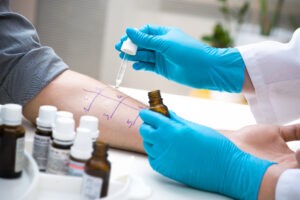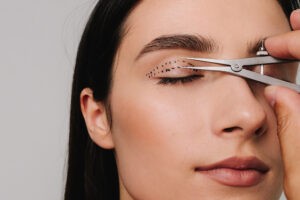
When it comes to smoothing wrinkles and fine lines, Botox and Dysport are two of the most popular injectable treatments available. Both are effective, but they have distinct differences that might make one a better option for your specific needs. Here, we’ll explore how Dysport and Botox compare in terms of formulation, unit measurement, application, and results to help you make an informed decision.
What Are Botox and Dysport?
Both Botox and Dysport are injectable neuromodulators made from botulinum toxin type A. They work by temporarily relaxing the muscles responsible for wrinkles, creating a smoother, more youthful appearance. Common treatment areas include:
- Forehead lines
- Crow’s feet
- Frown lines (glabellar lines)
- Bunny lines on the nose
- Lip lines (smoker’s lines)
Despite their similarities, Botox and Dysport have unique formulations that impact their performance and unit measurements. Understanding these differences can help you make the best choice for your cosmetic goals.
Unit Measurement: How Do They Differ?
One of the main differences between Botox and Dysport is how their units are measured and dosed. Dysport units are not equivalent to Botox units, which means the same number of units will not deliver the same effect.
- Botox: Measured in smaller units with higher potency per unit.
- Dysport: Measured in larger units, but each unit is less potent than a Botox unit.
Typically, a single Botox unit equals about 2.5-3 Dysport units. Your provider will account for this difference when planning your treatment to ensure consistent results.
Formulation and Spread
Another key difference between Botox and Dysport lies in their formulation and how they diffuse in the tissue after injection:
- Botox: Has a more concentrated formula, which means it stays localized to the injection site. This makes it ideal for smaller treatment areas or precise corrections.
- Dysport: Diffuses more broadly, covering larger areas with fewer injections. This makes it a great option for treating larger areas, like the forehead or masseter muscles for jaw slimming.
How Long Do Results Last?
Both Botox and Dysport deliver temporary results, but the duration can vary slightly:
- Botox: Results typically last 3-4 months. Regular maintenance is required to sustain the effects.
- Dysport: Results may last 3-4 months as well, though some individuals report slightly quicker onset (2-3 days) and slightly longer-lasting effects compared to Botox.
Treatment Experience
The injection process for both Botox and Dysport is similar, involving minimal discomfort and no downtime. A skilled injector will evaluate your facial structure and tailor the dosage and placement to your needs. Depending on the treatment area, your session may take 10-30 minutes.
You may experience slight redness or swelling immediately after treatment, but these effects usually subside within a few hours. Results gradually become visible over several days as the muscles relax.
Comparing Side Effects
Both treatments are considered safe when administered by an experienced professional, but there are potential side effects to be aware of:
- Botox: Common side effects include mild swelling, bruising, or redness at the injection site. Rarely, temporary drooping of the eyelids or eyebrows may occur.
- Dysport: Similar side effects, though the broader diffusion may increase the risk of affecting nearby muscles if improperly injected.
Choosing Between Botox and Dysport
Deciding between Botox and Dysport often comes down to your specific goals and preferences. Here are some considerations:
- Treatment Area: Botox is ideal for precise corrections, while Dysport’s broader diffusion works well for larger areas or more dynamic wrinkles.
- Onset of Results: Dysport may show visible results sooner, often within 2-3 days, compared to Botox’s 3-5 days.
- Budget: Dysport is often priced lower per unit, but remember that more units are required compared to Botox.
- Injector Recommendation: A skilled provider will recommend the best option based on your anatomy and desired results.
- Maintenance Preferences: If you prefer quicker results with less frequent touch-ups, Dysport may be a better option for you.
Can You Combine Botox and Dysport?
For individuals with multiple treatment goals, combining Botox and Dysport may provide a tailored solution. For example, Botox can be used for precise corrections around the eyes, while Dysport can address larger areas like the forehead. Consult with your injector to determine the best approach for your needs.
Why Choose Nuveau for Neuromodulators?
At Nuveau, we specialize in personalized treatments to help you achieve natural, refreshed results. Whether you’re considering Botox, Dysport, or a combination of both, our experienced team will guide you through the process and tailor your treatment to your unique needs. From consultation to follow-up, we prioritize your safety, comfort, and satisfaction.
Ready to explore your options? Schedule a consultation with Nuveau today and discover how Botox or Dysport can help you look and feel your best.

